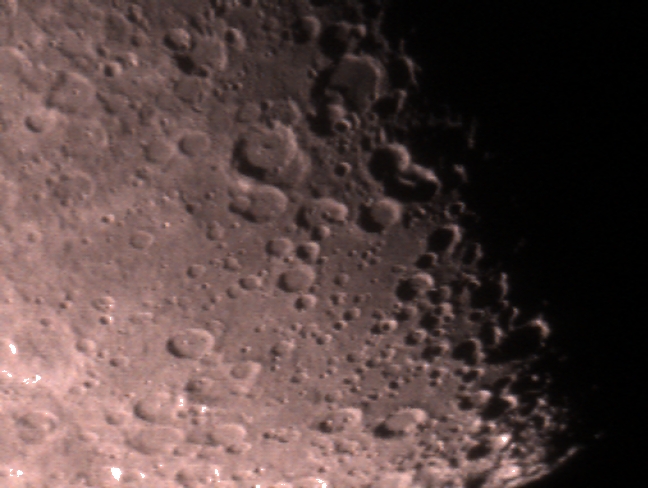
Total lunar eclipse showing the noon at totality surrounded by the major stars of Leo. Taken with a William Optics SD66Z, focal reducer and a Canon EOS 350 DSLR. Unguided, mounted on a photographic tripod.

Planetary
My first decent image with the Meade DSI and ETX125. Only about a dozen frames and I stopped quick just to make sure I captured the image.

This second image with the Meade DSI and ETX125 showed better definition and focus.
This was 50 images stacked in a 10 minute period. It was taken a few days later than the first hence Saturn is in a different orientation.

My first shot at capturing Jupiter. Not a great image and the dec drive broke just afterwards. Since then Jupiter has been too low on the horizon to attempt a better image.
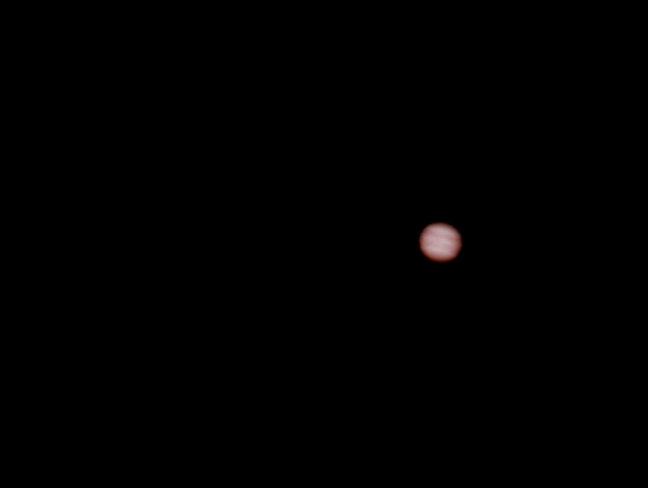
Comet
I received an email alert from the SPA that 17P Holmes had an outburst of gas around the orbit of Jupiter and brightened a million fold. It was four days before a gap in the clouds appeared and it took 20 seconds to find the comet in binoculars. From there I looked at it through the SD66Z and then mounted up the DSLR to get an image before the weather closed in again.
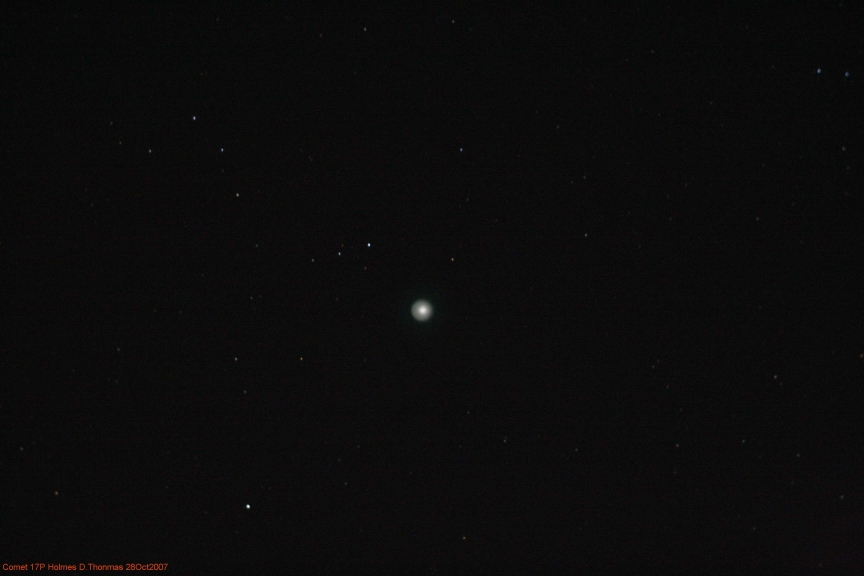
The next night was clear and I used the ETX125EC with the DSLR to get a more detailed image.

Out for the third night running! Comet 17P Holmes captured with the Meade DSI with an Atik focal reducer at prime focus of the Meade ETX125. DSI software used to track the object and stack 125 two second exposures over 10 minutes.
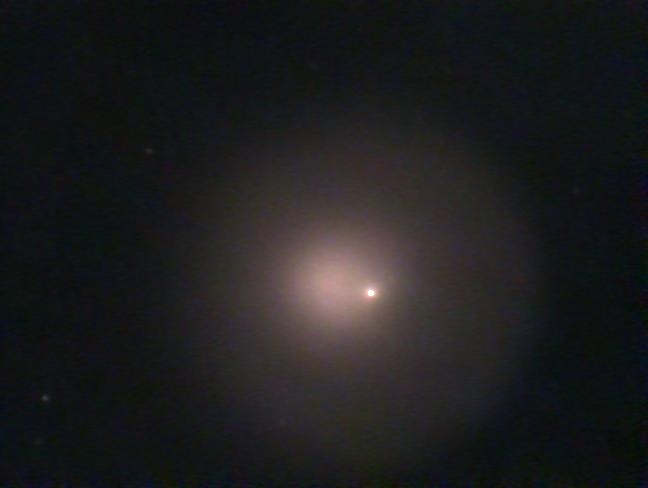






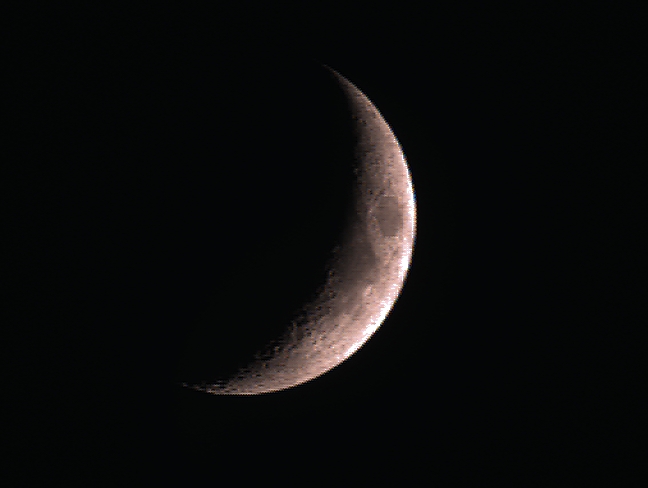
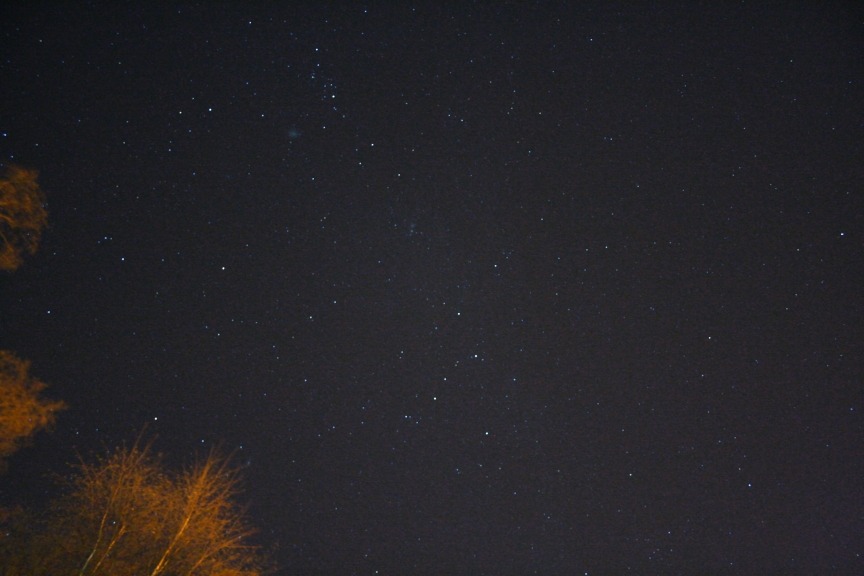
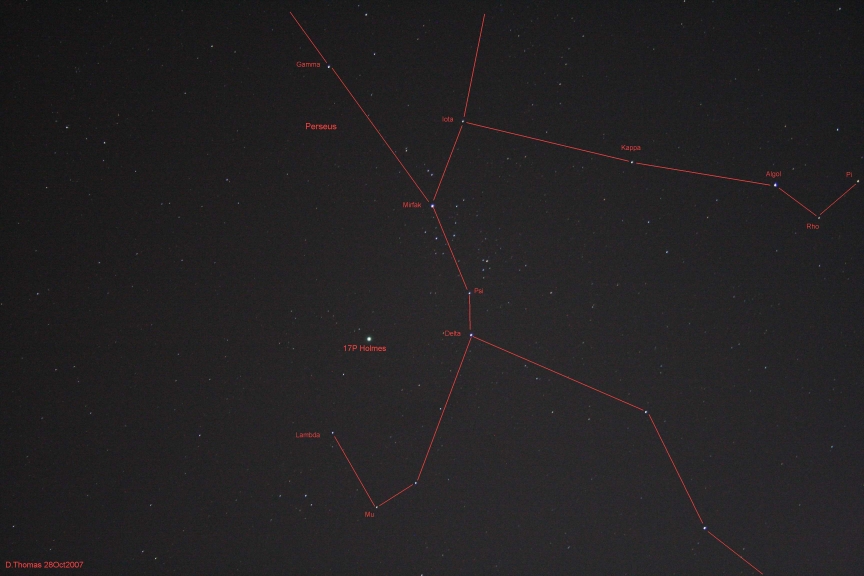
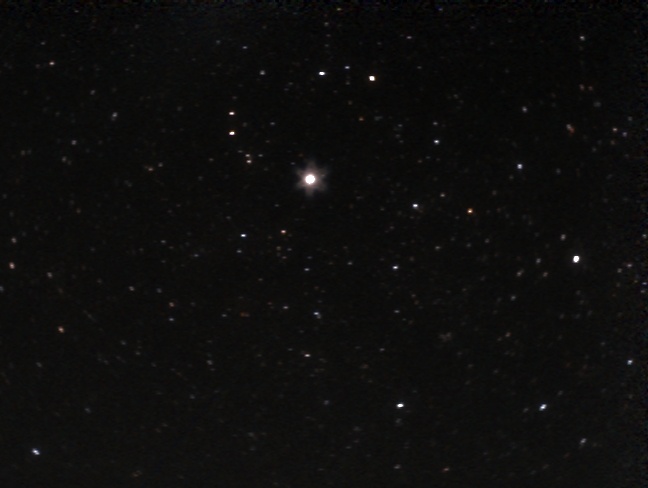


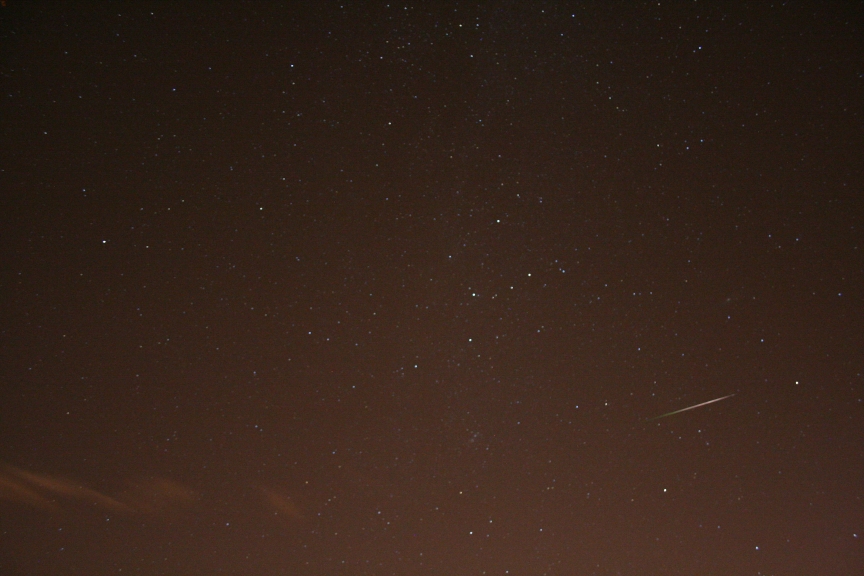
 Visitors since 17th Nov 2007
Visitors since 17th Nov 2007